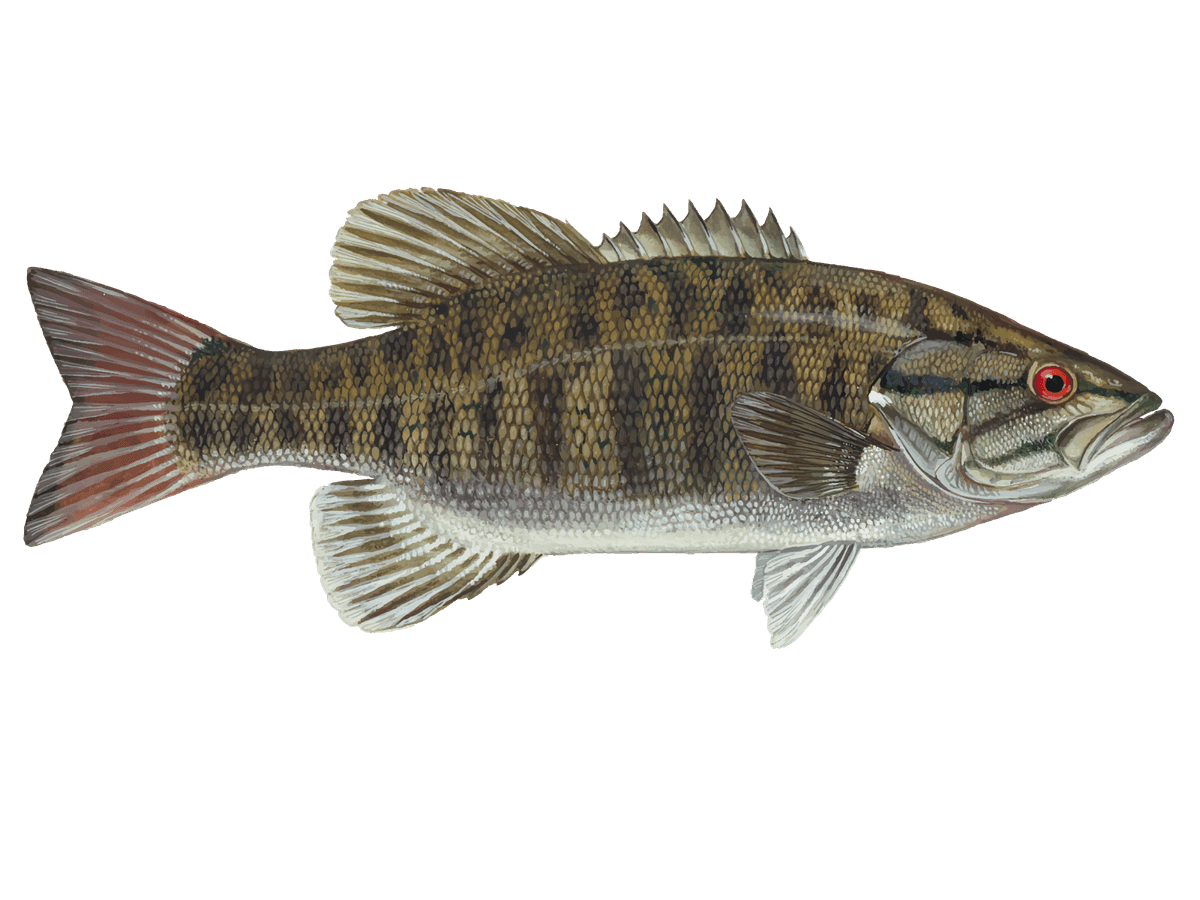Beginner Bass Fishing on Susquehanna with Pro Guide
- Published Date: September 11, 2025
- Fishing
- Susquehanna River
- $250 - $375 price range
Summary
%2F%2Fusers%2F0386b948-1c3d-4c9d-b62b-cc0f644e6aa2%2Fratecard%2Flone-angler-hagerstown-2422-mfd6agk2.webp&w=1200&q=75)
Smallmouth Action Shots


Learn the Ropes: Full-Day Bass Fishing on the Susquehanna
Trip Overview
Ready to wet a line and learn from the best? This full-day trip on the mighty Susquehanna River is tailor-made for newcomers to bass fishing. You'll spend 8 hours on the water with Master Guide Victor Campbell, a seasoned pro with over 35 years of experience under his belt. Whether you're a total newbie or just looking to sharpen your skills, Victor's patient guidance will have you casting like a pro in no time. The Susquehanna's known for its world-class smallmouth bass fishing, and we'll put you right in the thick of the action. No need to fuss with gear - we've got you covered from rods to lures. It's all about having fun, learning the ropes, and hopefully landing a few bass along the way. Trust me, once you feel that first hit on your line, you'll be hooked for life!
What to Expect on the Water
We'll kick things off bright and early, meeting at the boat ramp as the mist's still rising off the river. After a quick safety rundown, we'll hop in the boat and Victor will walk you through the basics of your gear. You'll learn how to properly hold a rod, tie a few essential knots, and get the lowdown on different types of lures. As we cruise to our first fishing spot, Victor will point out key river features and explain why bass love to hang out there. Throughout the day, you'll practice different casting techniques - from pitching jigs under overhanging trees to working a topwater lure across a rocky flat. Victor's always right there to offer tips, answer questions, and maybe even share a few local fishing tales. We'll target different areas of the river, giving you a well-rounded experience of what the Susquehanna has to offer. And when you hook into that first bass? Well, let's just say the grin on your face will say it all.
Top Catches This Season
The Susquehanna River is a smallmouth bass factory, and we've been having a banner year so far. Early spring saw some monster pre-spawn females in the 4-5 pound range crushing jerkbaits in the deeper holes. As summer's heated up, we've had great luck working soft plastics along rocky drop-offs and current seams. Topwater action has been on fire lately, with some heart-stopping strikes on buzzbaits and poppers during low-light hours. While we focus on teaching techniques and building skills on this trip, don't be surprised if you tangle with a few quality fish. Victor's personal best with a client this season was a chunky 21-inch smallmouth that put up one heck of a fight. Remember, it's not all about size - that scrappy 12-incher that slams your crankbait can be just as thrilling when you're learning the ropes!
Why Anglers Keep Coming Back
There's something special about the Susquehanna that keeps folks coming back for more. Maybe it's the way the morning fog lifts off the water, revealing islands and rock formations that look like they're straight out of a painting. Or perhaps it's the chance to spot a bald eagle soaring overhead as you're working a current seam. But let's be real - it's mostly about the bass. The Susquehanna's smallmouth population is legendary, offering both numbers and size that rival just about anywhere in the Northeast. What sets this trip apart, though, is Victor's knack for breaking down the complexities of bass fishing into easy-to-understand chunks. You won't just be catching fish; you'll be learning why they're there and how to consistently find them on your own. It's the perfect blend of hands-on experience and insider knowledge that'll have you itching to get back on the water as soon as you step off the boat.
Species You'll Want to Hook
While the Susquehanna River is home to a variety of fish species, our main target on this trip is the hard-fighting, high-jumping smallmouth bass. These bronze beauties are the river's claim to fame, and for good reason. Smallmouth bass in the Susquehanna are known for their aggressive strikes and acrobatic fights. They typically range from 1-3 pounds, but fish in the 4-5 pound class aren't uncommon, especially in the spring and fall.
Smallmouth bass are ambush predators, often hiding near current breaks, rock piles, or submerged logs. They'll smash both live bait and artificial lures with equal enthusiasm. One of the coolest things about smallies is their willingness to strike topwater lures, creating explosive, visible strikes that'll get your heart racing.
These fish are most active during the warmer months, from late spring through early fall. However, the biggest bass of the year are often caught in the pre-spawn period of early spring when the big females are feeding heavily. Susquehanna smallmouth are known for their beautiful bronze coloration, often with dark vertical bars along their sides. Their red eyes give them a fierce look that matches their fighting spirit.
While we're primarily after smallmouth, don't be surprised if you hook into a few other species. The river also holds some largemouth bass, especially in backwater areas with vegetation. You might also encounter walleye, particularly in deeper holes, or the occasional musky if you're really lucky. Each species offers its own unique challenge and excitement, adding to the diverse fishing experience the Susquehanna provides.
Time to Book Your Spot
Alright, let's cut to the chase - if you're itching to get out on the water and learn the ins and outs of bass fishing, this is the trip for you. Whether you're a complete novice or just looking to polish your skills, Victor's patient guidance and the Susquehanna's prolific bass population create the perfect learning environment. You'll walk away with new skills, unforgettable memories, and probably a few fish stories to tell.
Remember, we provide all the gear, so there's no need to invest in expensive equipment before you know what you're doing. It's just you, the river, and a day full of possibilities. Plus, with a maximum of two guests per trip, you're guaranteed plenty of one-on-one instruction.
Spots on Victor's calendar tend to fill up fast, especially during peak season. So if you're ready to dive into the world of bass fishing on one of the Northeast's premier rivers, don't wait to book. Give us a call or shoot us an email, and we'll get you set up for a day on the water you won't soon forget. Trust me, once you feel that first smallmouth hit your line, you'll be planning your next trip before you even get back to the dock!
Learn more about the species
Smallmouth Bass
Smallmouth Bass (Micropterus Dolomieu) Description
Smallmouth Bass belongs to the Sunfish family (Centrarchidae) and is a popular freshwater fish among anglers. Smallmouth Bass has a dark green or black color body, with vertical dark brown stripes that usually fade with age, and the color contrast may vary depending on the fish’s habitat. Their eyes are red or brown. They have two dorsal fins; the front one has 10 fin spines while the other has 10 to 15 soft rays.

Female Smallmouth bass are usually larger in size than males. The average size of smallmouth bass can be 18–20 inches. On average, they usually live only 5 to 6 years but can survive up to 15 years. Smallmouth bass found in lakes are larger than those found in streams and ponds. Females usually weigh from three to six pounds, while the males are around 2 pounds.
Smallmouth Bass Habitat

This bass species can be found in clear waters, such as ponds, lakes, and rivers. They prefer rubble and rocky bottoms. Smallmouth bass also prefer moderate temperatures, and they will swim deeper in the cooler water during summer.
Spawning
Smallmouth Bass spawn March-May when water temperatures reach between 59 and 64 degrees. The males build nests in the shallow waters of lakes and rivers. The nest is built building within 150 yards of where the male built his nest the previous year.
Diet
The Smallmouth Bass eats small fish, crayfish, and insects. They hide behind a fallen tree or a rock and attack when the prey is near.
Fishing Techniques - How to Catch Smallmouth Bass
A light breeze and calm waters are best suited to catch Smallmouth Bass. In spring and fall, they like to swim in open waters during bright days and warm temperatures. In summer, they swim deep under cooler water and are harder to find. It is best to fish for Smallmouth early morning or late evening.
Smallmouth bass are fighters. A spinning rod of light to medium action with a 6 to 10 pounds test line is recommended.
There are plenty of baits and lures that work successfully to catch these fish; insects, jigs, minnows, plugs, plastic worms, spoons and night crawlers. A favorite of anglers is to use spinning baits that when rigged weightless, can hang on top of the water. When the fish are in deeper water during the summer, use a rig with a weighted vertical drop hook.
Fly-fishing Smallmouth Bass is popular due to their abundance and strength. When you want to cast into deeper water, use a 6, 7 or 8 weight rod. This will be suitable for strong winds, landing larger fish, and a long cast. A longer rod, 81/2- to 9-foot, is good when you need accuracy for casting near shoreline structures or long-distance casting.
Is Smallmouth Bass Good to Eat
Smallmouth bass have a firm filet with a mild, yet distinct flavor that pairs perfectly with a variety of seasonings and cooking methods. So whether you prefer grilling, frying, or baking your catch, smallmouth bass is a tasty and versatile option that you won't want to miss out on. What's more, smallmouth bass are a healthy food option, as they are excellent sources of protein and Omega-3 fatty acids.
With any freshwater fish, you need to be mindful of the water you are fishing. Make sure if you are eating your catch, the water is clean and be aware that freshwater fish should always be cooked.

About the Reel Time Bass Fishing
%2F%2Fusers%2F0386b948-1c3d-4c9d-b62b-cc0f644e6aa2%2Fvehicle_picture%2F354051444_790234889221891_7084075010698633633_n.jpg&w=1200&q=75)
Vehicle Guest Capacity: 2
Manufacturer Name: Mercury
Maximum Cruising Speed: 35
Number of Engines: 1
Horsepower per Engine: 115
%2Ffit-in%2F250x250%2Fguide_websites%2F14879%2Fimages%2F1719260821260temp_logos_sheet__1_-removebg-preview.png&w=1200&q=100)
%2Fusers%2F0386b948-1c3d-4c9d-b62b-cc0f644e6aa2%2Fimages%2Fsmallmouth-bass-hagerstown-2489.jpeg&w=768&q=75)
%2Fusers%2F0386b948-1c3d-4c9d-b62b-cc0f644e6aa2%2Fimages%2Flone-angler-hagerstown-2422.jpeg&w=768&q=75)
%2Fusers%2F0386b948-1c3d-4c9d-b62b-cc0f644e6aa2%2Fimages%2Fsmallmouth-bass-hagerstown-fishing-2798.jpg&w=768&q=75)
%2Fusers%2F0386b948-1c3d-4c9d-b62b-cc0f644e6aa2%2Fimages%2Ffishing-trip-hagerstown-2339.jpeg&w=768&q=75)
%2Fusers%2F0386b948-1c3d-4c9d-b62b-cc0f644e6aa2%2Fimages%2Fangler-awesome-catch-maryland-2960.jpg&w=768&q=75)
%2Fusers%2F0386b948-1c3d-4c9d-b62b-cc0f644e6aa2%2Fimages%2Fmaryland-anglers-catch-2273.jpg&w=768&q=75)
%2Fusers%2F0386b948-1c3d-4c9d-b62b-cc0f644e6aa2%2Fimages%2Ffishing-success-maryland-2334.jpg&w=768&q=75)
%2Fusers%2F0386b948-1c3d-4c9d-b62b-cc0f644e6aa2%2Fimages%2Ffishing-fun-maryland-2294.jpg&w=768&q=75)
%2Fusers%2F0386b948-1c3d-4c9d-b62b-cc0f644e6aa2%2Fimages%2Fangler-fishing-maryland-2428.jpg&w=768&q=75)
